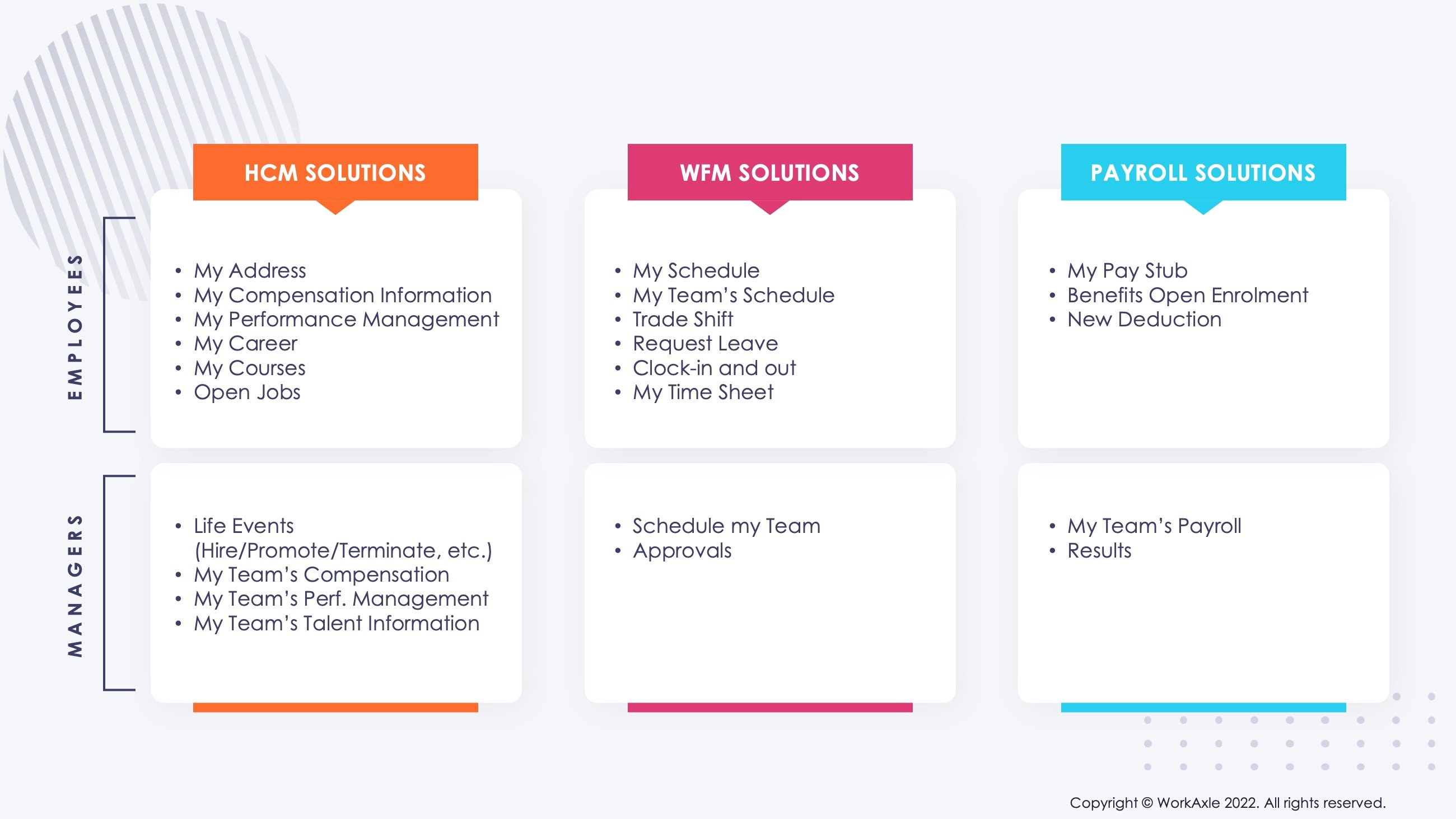The words "Employee Experience" perfectly capture the Zeitgeist of the software industry's last five years. Analysts and vendors alike have been extolling the benefits of designing easy and fun consumer-grade software as employees have raised their expectations through their daily use of social media and personal apps and are looking for a similar experience from their enterprise solutions.
In the context of the New Normal brought about by the pandemic and the changes to where and how we work, Gartner warns that “IT leaders transforming HCM must improve the employee experience by resisting “one size fits all” solutions, and instead deploying flexible, human-centric HR processes and tools to meet diverse workforce needs.”1
Far too long have software engineers designed products from the database first to the user, versus considering the user experience first and then the technical aspects. However, I would posit that there is a blind spot or a lack of attention spent on what is, for most industries, the essential part of a total employee experience strategy.
Much of the press and the focus on delighting users through their use of technology has been on Human Capital Management (HCM) solutions. The other two legs of the HCM-driven non-operational technological stool that impact an employee are Workforce Management (WFM) and Payroll.
To understand my hypothesis, one must look at how often a user interacts with software in the Retail and Manufacturing industries:
Step 1: The HCM Software User Profiles in Retail and Manufacturing
In both Retail and Manufacturing, there are two main profiles of employees who interact with an HCM-related system:
1 Corporate:
|
2 Store or Plant:
|
The distribution of the different populations in these verticals is more heavily weighted on store/plant employees due to the nature of their core operations.
Based on my 30-year experience in HCM consulting, I broke down my observations for an average percentage of each profile in these industries below. It’s a non-scientific estimate and should be treated as such:
|
Corporate (% of total population) |
Store/Plant (% of total population) |
|
| RETAIL | 10% | 90% |
| MANUFACTURING | 15% | 85% |
Table 1: Estimated Total % of Population in Corporate vs. Store/Plant in Retail and Manufacturing.
Step 2: Typical Services Provided by Software Vendors for HCM, WFM, and Payroll
To analyze software users in an organization and interact with the solution, we need to define a list of the generic services most broadly provided by software vendors by functional area and role. Although this is not meant to be an exhaustive list, the Diagram below provides a representative view:

Step 3: Frequency at Which Different Profiles Transact
Lastly, we bring it all together. The other variable to consider when proving my hypothesis is the frequency at which each profile uses each service based on the list in Diagram 1.
|
|
Frequency of Accessing HCM Self Service |
Frequency of Accessing WFM Self Service |
Frequency of Accessing Payroll Self Service |
|
EMPLOYEES |
|||
|
Corporate |
Weekly/Monthly | Weekly/Monthly | Monthly |
|
Store/Plant |
Weekly/Monthly | Daily | Weekly or Bi-weekly |
|
MANAGERS |
|||
|
Corporate |
Weekly |
Monthly |
Monthly |
|
Store/Plant |
Weekly/Monthly |
Daily |
Weekly or Bi-Weekly |
Conclusion
In a Sapient Digital Report published in 2020, 31% of respondents answered that they are evaluating replacing their Workforce Management solution in the next 24 months, followed by 27% for payroll and 24% for HRMS. As such, understanding that there are three legs to the stool and based on the analysis provided above focused on Retail and Manufacturing, Workforce Management not only has the highest number of employees using these services provided by your software solution, but these services are also used at the highest frequency. Thus, when planning your overall employee experience strategy, do not fall into the trap of underestimating the importance of including Workforce Management as a critical element.
1 Gartner, "Predicts 2022: HCM Technologies Enable Employee Experience to Support the “New Normal” of Work", Ron Hanscome, Jeff Freyermuth, John Kostoulas, Chris Pang, Helen Poitevin, 9 November 2021.




COMMENTS